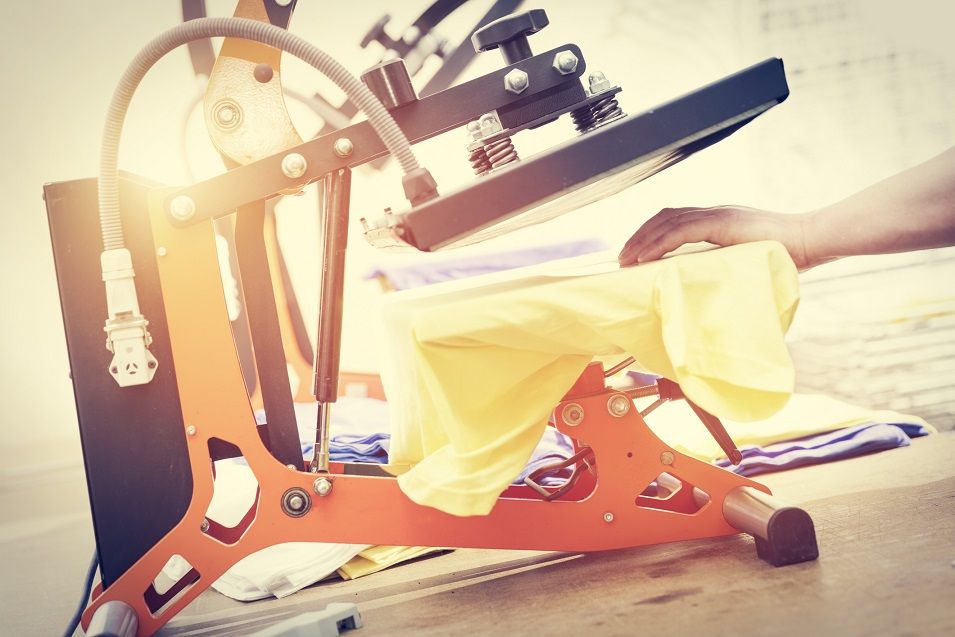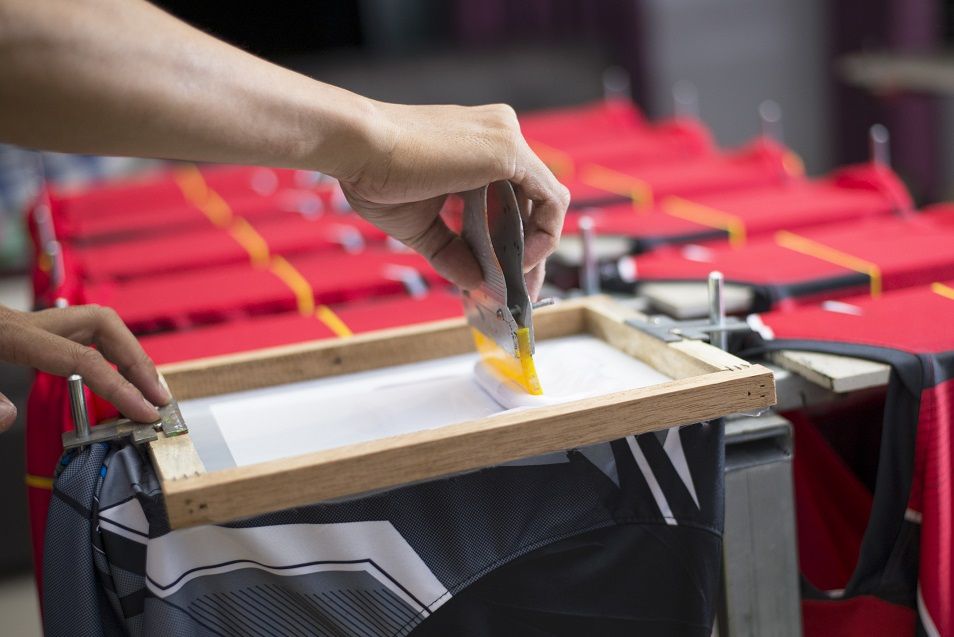Screen Printing Vs Sublimation: Which is Best?
by Anthony Clark
Both screen printing and sublimation are two practical textile printing and printing processes for having a very high wash resistance and considerable quality. Both processes have advantages and disadvantages. Depending on the one chosen it will be
What are the advantages and disadvantages of screen printing and sublimation and which one suits you best?
Screen printing is an analog technology that has proven over the years that it can be reliable and durable. Although certain processes have been automated, it is still a mainly handmade craft system. It is currently the most popular printing system. The screen printing process begins with the selection of the design to be printed, then it is printed on a photolith and then transferred to a mesh of tensioned fabric on a frame or frame called a screen.
Contents

What is Screen Printing ?
Screen printing is a printing technique that uses a mesh screen to transfer ink onto a substrate, such as paper, fabric, or plastic. The screen printing process starts with the preparation of the screen. The screen is coated with a photosensitive emulsion and then exposed to ultraviolet light. The areas that are not exposed to light remain water soluble while the areas that are exposed harden and become insoluble.
After exposure, the screen is washed with water to remove the unexposed emulsion. The image on the screen is now ready for use. Ink is applied to the screen and pressed through the mesh onto the substrate. The intensity of the ink deposit can be controlled by adjusting the pressure applied to the screen. Screen printing is used for a wide variety of applications, including T-shirts, posters, and textiles. It is also used for printing on ceramics and metal.
Screen printing is a versatile printing technique that can be used for a variety of applications. It is an economical printing process that can produce high-quality results. Screen printing is a great choice for printing large quantities of items.
The Pros and Cons of Screen Printing
Screen printing is a process that can be used to create prints on a variety of different surfaces, including textiles, paper, and plastic. It is an old printing technique that has been around for centuries. Here are some of the pros and cons of screen printing:
Pros
- Screen printing is a very versatile printing technique that can be used to create prints on a variety of different surfaces.
- It is an affordable printing method that is relatively easy to learn.
- The prints created with this technique are usually high quality and durable.
Cons
- Screen printing can be quite messy and requires a lot of cleanup.
- It can be a time consuming process, particularly if multiple colors are being used.
- The prints created with this technique are not always weatherproof.
What is Sublimation ?
Sublimation is the process of turning a solid into a gas without going through the liquid stage. This can be done by heating the solid to the point where it vaporizes. The vapor will then condense on a colder surface, such as a cold plate or metal coil. This process can be used to produce prints on fabric and paper. The prints are created by transferring dye from a solid form onto a substrate. In order for this to work, the dye must be in sublimation ink form. Sublimation inks are not water soluble, so they won't run or bleed when printed. Sublimation printing is a popular choice for printing on t-shirts, because the prints are durable and won't fade.
The Pros and Cons of Sublimation
There are pros and cons to sublimation printing. Let's take a look at some of the pros first:
Cons:
- Sublimation prints can be very vibrant and eye-catching.
- They can also be very detailed, making them great for intricate designs.
- The printing process is relatively fast, so you can get your prints quickly.
Cons
Now let's take a look at the cons:
- The cost of sublimation printing can be relatively high, especially if you need a large quantity of prints made.
- The quality of sublimation prints can sometimes be less than perfect, depending on the quality of the printer and paper used.
- The prints can also be susceptible to fading over time.
So, as you can see, there are both pros and cons to sublimation printing. It's up to you to decide whether the pros outweigh the cons for your particular project. Thanks for reading!
Expert Tips on Screen Printing Vs Sublimation
- Screen printing is an older printing technique that uses a mesh screen to transfer ink onto a substrate
- Sublimation is a newer printing technique that uses heat and pressure to transfer dye onto a substrate
- Screen printing is best for transferring large quantities of ink onto a substrate
- Sublimation is best for transferring small quantities of dye onto a substrate
- Screen printing is more affordable than sublimation
- Sublimation produces higher quality prints than screen printing
Detail Differences Between Sublimation And Screen Printing

In the world of prints and prints, the most practical and popular techniques of engraving designs are: sublimation and screen printing.
We will analyze 3 aspects of these processes and recognize the most important characteristics of each one of them, in this way we can know the technique that is most useful for our project. Let's get started!
How are Your Procedures
Sublimation or thermal fixation is that printing technique in which the ink is printed by means of heat on the canvas, microscopically painting with a 'spray' the article to be sublimated, thus moving from a solid state to a gaseous state.
For its part, the screen printing technique - being one of the oldest - requires an important manual intervention to be able to perform the stamping, although in recent times it has been updated with machines.
The process begins with the selection of the design that will be printed on the photolyte, which will be transferred to a mesh of tensioned fabric on a frame called a screen. Through the insolation of the screen it is possible to transfer the design to the mesh. In the sunstroke it is possible that some pores of the mesh are open (where the ink will pass) and others closed (in which there is no ink transfer). Finally, the screen is placed on the garment and the ink of a single color is transferred, dragging the ink with a palette on the screen.
Development of Materials
Sublimation is successful in 100% polyester textiles or with at least 2/3 of this in its composition, as well as being one of the few printing methods that allows printing on totally rigid supports (cups, photo frames, plates, watches, etc.) it is necessary that the articles incorporate a special polyester coating.
Eye: cotton textiles today are possible to sublimate, however they require specific techniques and products, otherwise sublimation will not be very durable.
With silkscreen printing, it is possible to print on almost all materials (cardboard, glass, plastic, paper, cloth or metal), in articles of very varied formats - although it is mostly used to print flat areas.
Colors

Sublimation : it should be noted that the origin of sublimation is in the development of photography, so this technique achieves an unlimited range of colors, using CMYK sublimation ink which are transparent and add to the background / support color.
In this sense and as we know it, the printing of photographs is done on white photographic paper and not on one of color, so, by sublimating on a white support, colors faithful to the original image will be obtained.
Screen printing : allows the use of denser colors, offering a wide variety of color and solidity when exposed to light. This uniqueness allows very concrete and attractive effects to be achieved, which cannot be done with the other systems.
It should be noted that if the original design consists of several colors, a screen for each color should be prepared.
Is screen printing or sublimation better?
The truth is that there is no option that is better than the other, each of these stamping techniques has great advantages for specific purposes so it all depends on the work to be done, that is, the type of order, design, fabric, color, material etc
Conclusion on Sublimation vs Screen Printing
So, which printing process is better for your business? The answer to that question really depends on what you're looking for. If you need a large quantity of high-quality prints with vibrant colors, then screen printing is probably the better option. However, if you're looking for a smaller quantity of prints with more subtle colors and a softer feel, sublimation might be the better choice. Whichever process you choose, make sure to work with an experienced printer who can help you create beautiful products that represent your brand in the best possible way.
 |  |  |  |

About Anthony Clark
Anthony Clark always had a passion for digital drawing and printing ever since he was young. He would wander around his parents' house in Phoenix, Arizona drawing various things with his older digital tablet. Be it just a memory collection or a portrayal of anything: objects, parents, school, events, etc. He received his BA in Graphic Design at San Jose State University - the heart of Silicon Valley. Now Mr. Clark is excited to present his experience coupled with some colorful dips to help shape the future of printing.
Thoughts on "Screen Printing Vs Sublimation: Which is Best?"
 |  |  |  |
Get some FREE Gifts. Or latest free printing books here.
Disable Ad block to reveal all the secret. Once done, hit a button below
 |  |  |  |